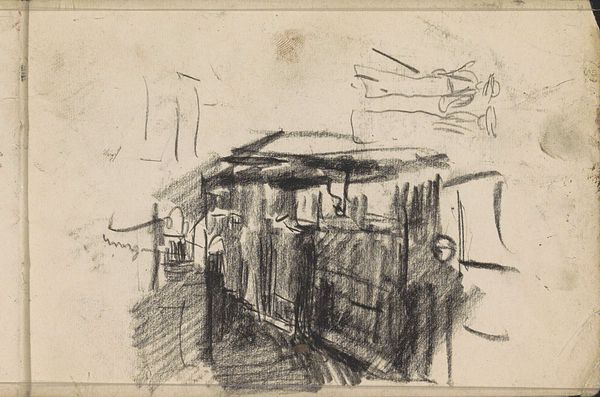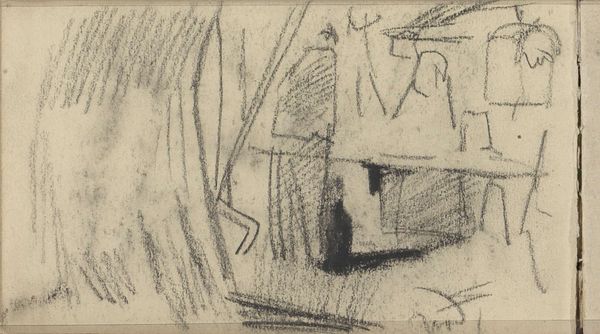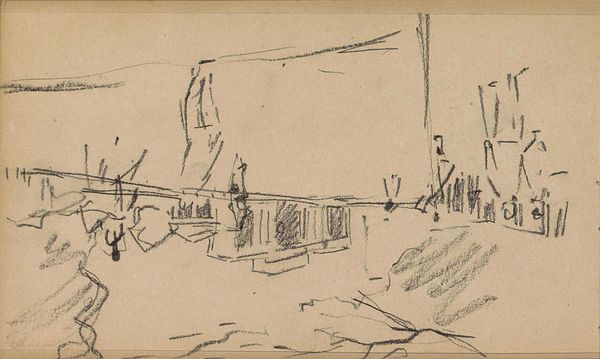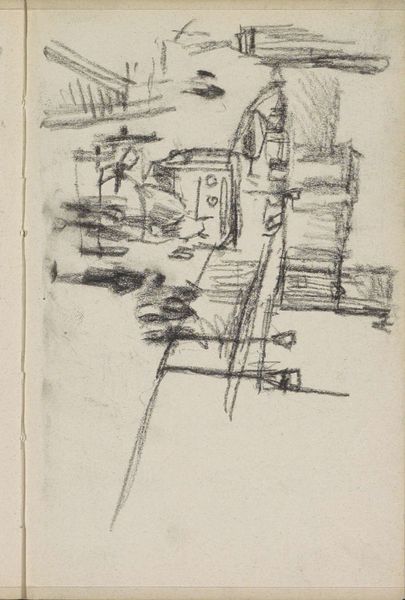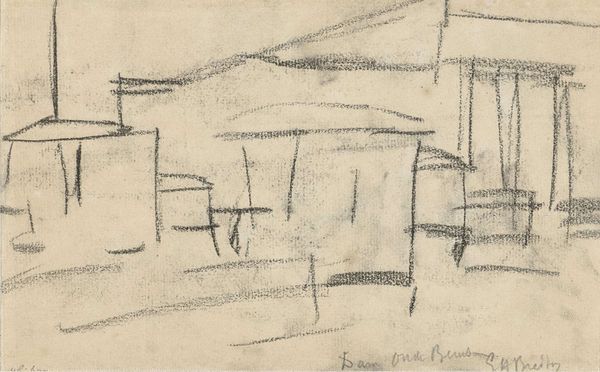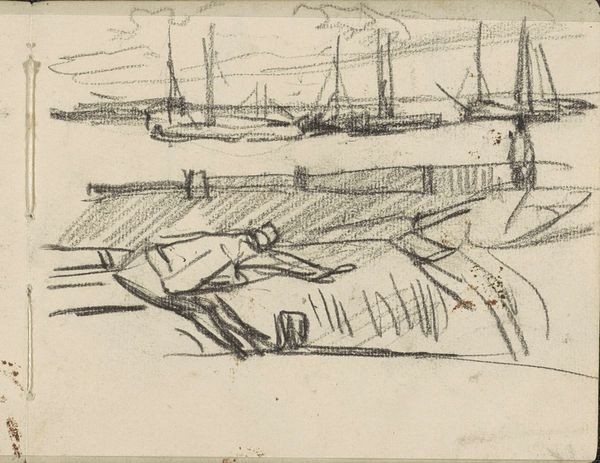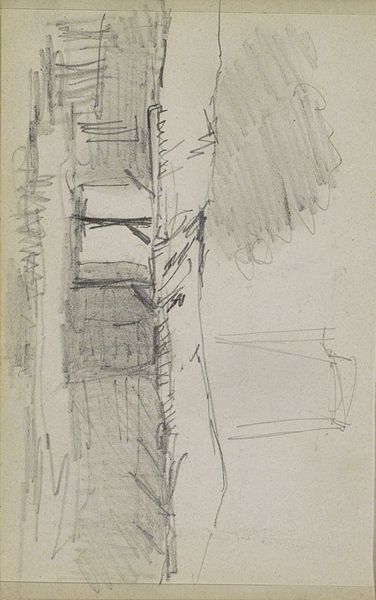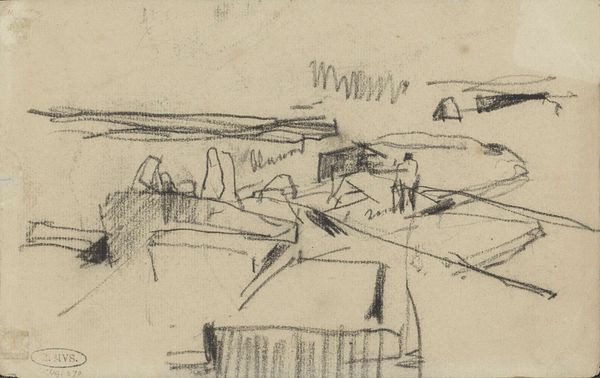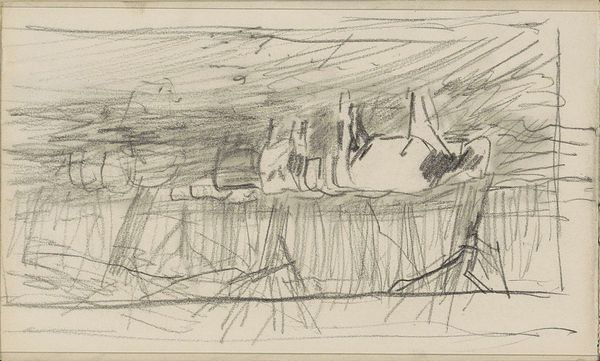
Copyright: Rijks Museum: Open Domain
Curator: This is George Hendrik Breitner's "Bridge over the Leidsegracht in Amsterdam," a drawing likely made between 1886 and 1903, using graphite, pen and pencil. It strikes me as immediate, almost like a snapshot in time. What's your take? Editor: It's definitely evocative. I find the starkness and contrast fascinating. The bridge and its reflection almost form a unified whole. But, what exactly should I be *seeing* here? Curator: Well, let’s think about bridges. Throughout art history, they've often symbolized connection, transition... even potential danger, as a point of vulnerability. Do you get any of that here? Is Breitner presenting a stable society, or one in flux? Editor: The rapid lines definitely convey a sense of movement, not stillness. Maybe he is interested in depicting the modern, ever-changing city? I wonder about the almost chaotic strokes above the bridge—they almost seem to consume the scene. Curator: Indeed! The area above, as a symbolic 'sky,' feels weighty, doesn’t it? In terms of urban imagery, this could point to the increasing industrialization and the encroachment of technology upon everyday life in Amsterdam. It reminds me of storm clouds, maybe hinting at broader social tensions bubbling beneath the surface of that period. What about you? What kind of ‘storm’ might be brewing? Editor: I suppose it’s a reminder that progress, while celebrated, can also cast a shadow. This drawing feels like more than just a pretty picture of a bridge. Thanks! Curator: Exactly! By considering these layers of cultural memory, we can unpack the artist's intent a bit further and appreciate just how charged even the simplest cityscape can be.
Comments
No comments
Be the first to comment and join the conversation on the ultimate creative platform.
